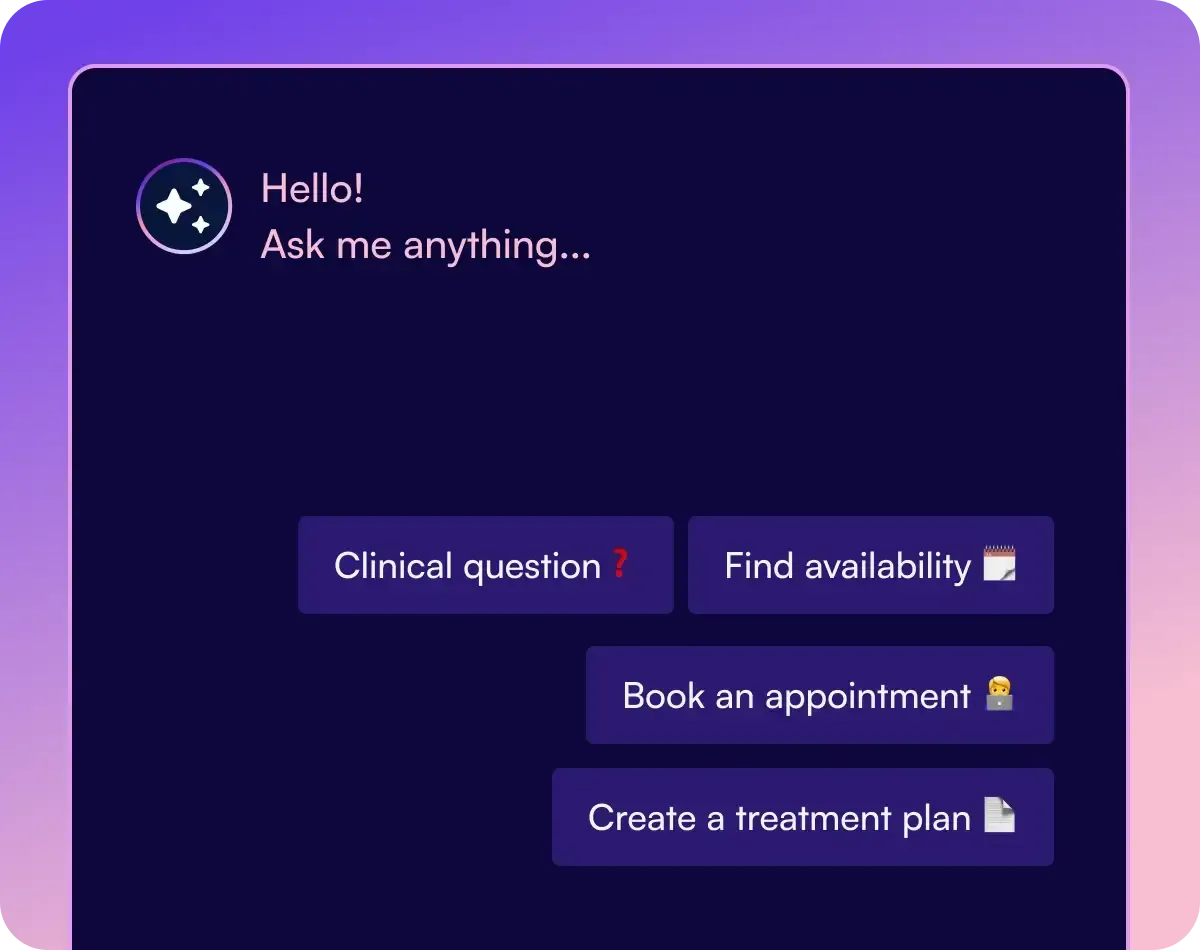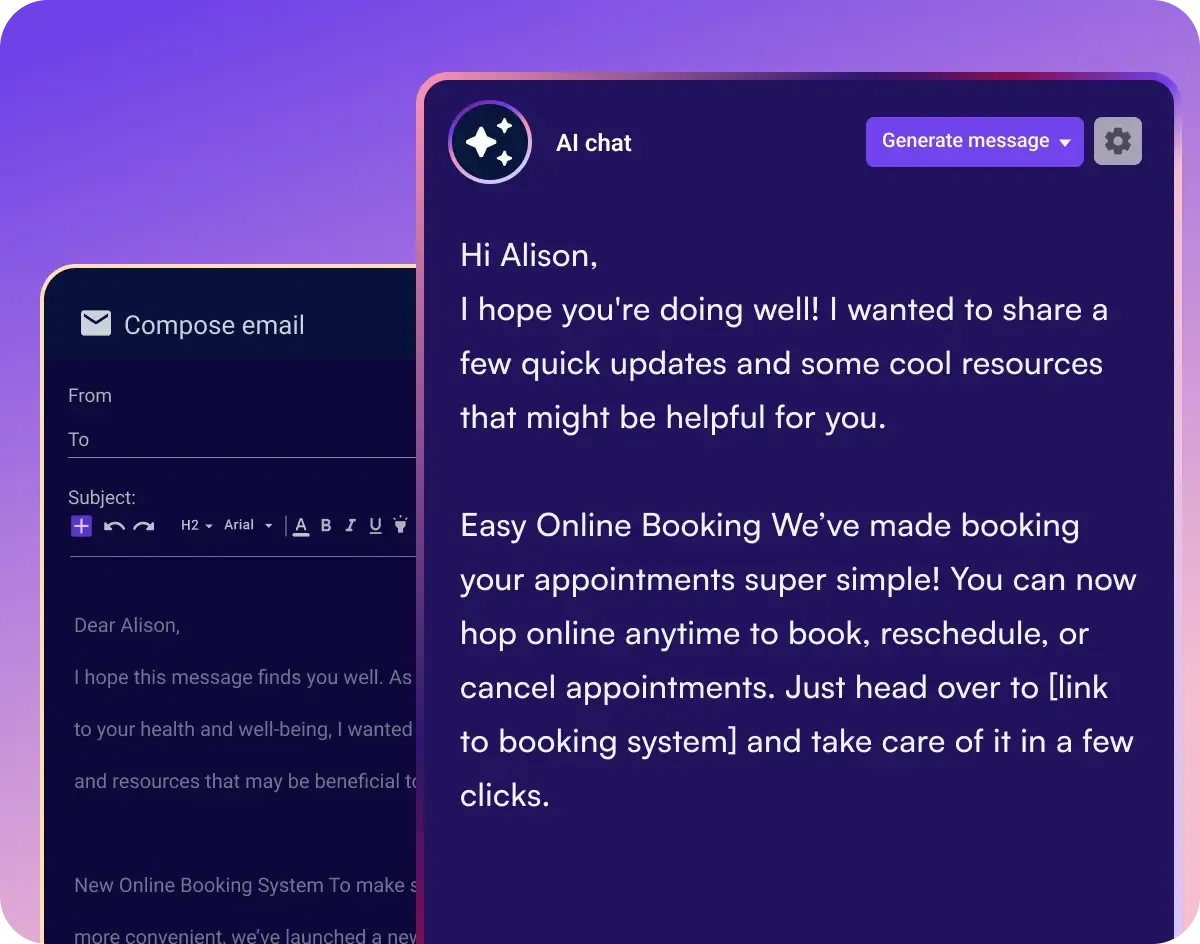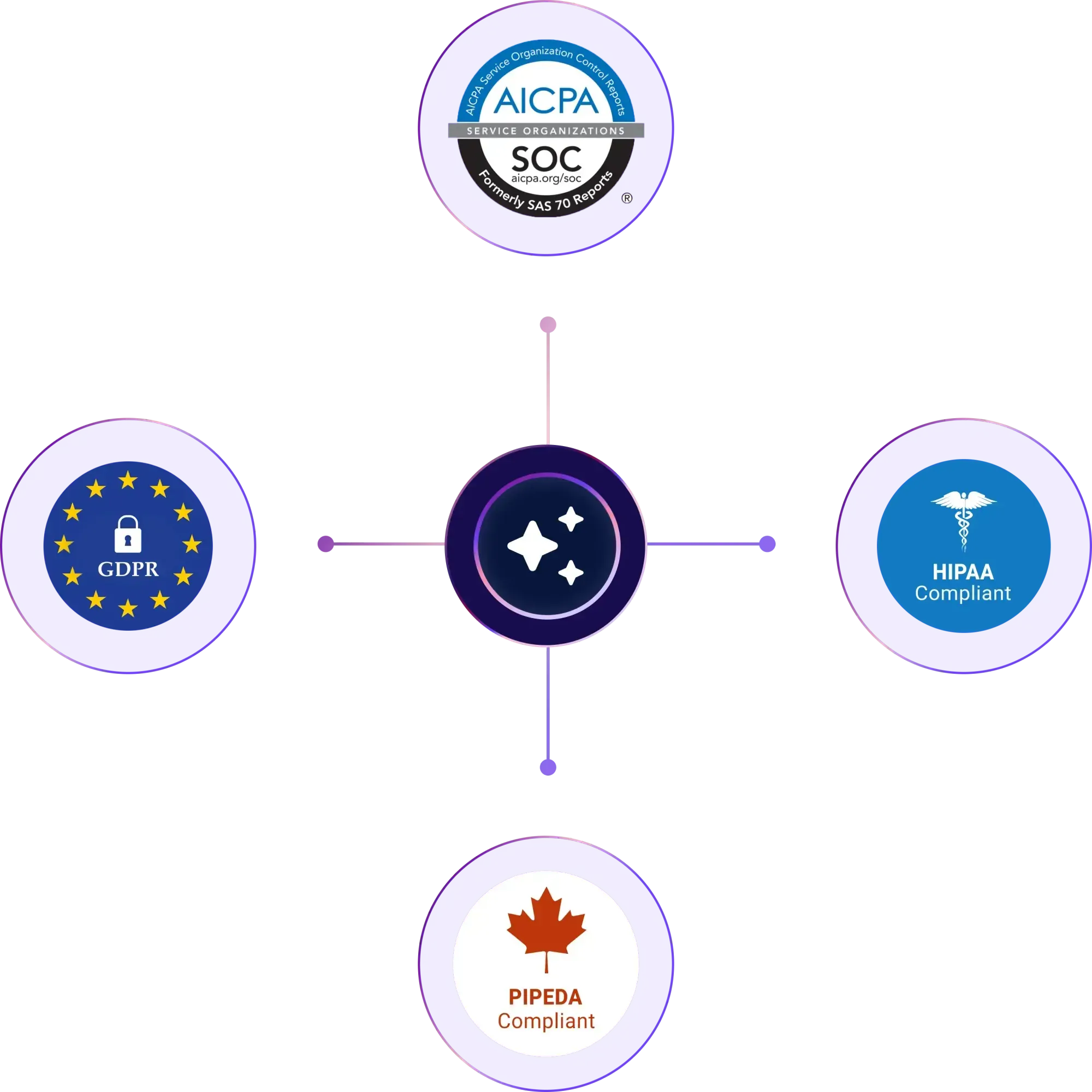
One AI to replace them all
Ask
Instant answers to all your work questions.
The days of asking a human are over. Carepatron AI gives instant, accurate answers based on context from any work within and connected to Carepatron.

Write
The AI writer that writes the way you do.
With Carepatron AI, craft compelling content that writes just like you. Ensure your messages, reports, and notes are accurate, error-free, and effectively communicate the right information.
AI summarize
AI transcribe
Generate note
Create templates
Built-in spell check
Writing assist
Chat
The most advanced AI-powered inbox ever.
Imagine waking up to an inbox where every email or message has a draft reply. You would simply edit, then send. Sometimes, you wouldn't even edit. With Instant Reply, our practitioners consistently write emails twice as fast.

Build
Automate updates, workflows, and tasks
Stop doing work about work with carefully crafted AI workflows and status updates for tasks, notes, and even clients.
Use AI with any Carepatron plan. Honest pricing. No hidden fees.*
Save 10 hours per week
AI-powered tools for efficient note-taking, scheduling, and communication.
Personalize client care
Use AI to customize patient care and ensure saving time doesn’t compromise patient needs.
Cut up costs by 62%
Practitioners and teams save on costs by removing unnecessary spend on other AI tools.
Carepatron AI empowers, not endangers
Your data is yours. Strict contracts with all AI sub processors explicitly prevent the use of your data for model training.





